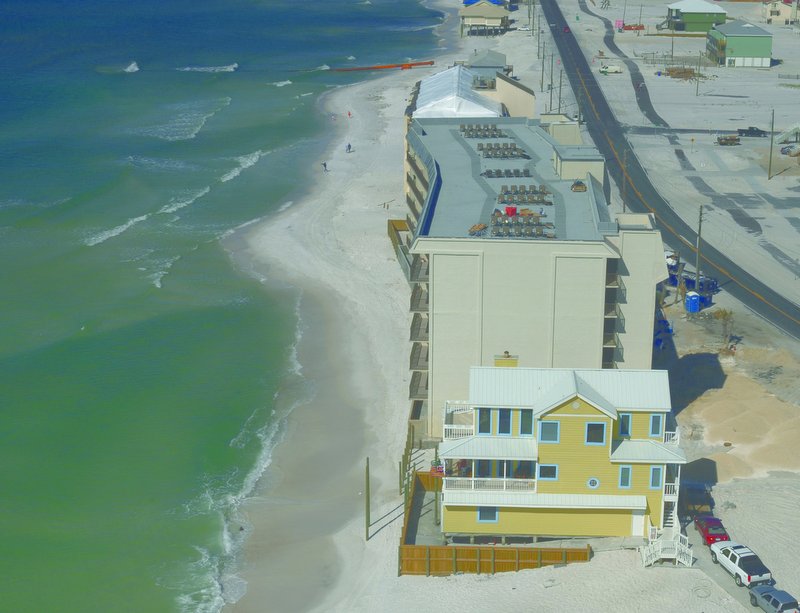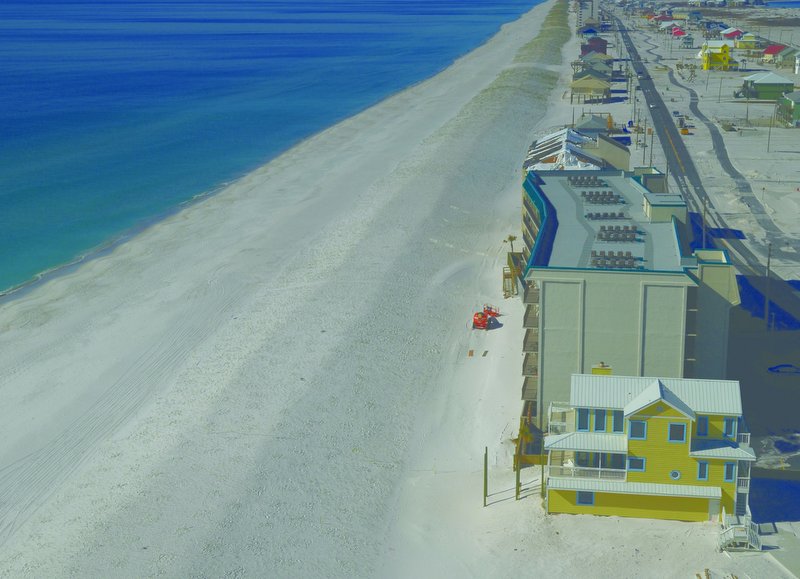Navarre Beach – Vote for as America’s Best Restored Beach
Vote for Navarre Beach as America ’s Best Restored Beach -Past Winners Compete in “Best of the Best” Coastal Contest-
To celebrate 10 years of honoring Best Restored Beaches Across America, the American Shore & Beach Preservation Association is asking anyone who loves the beach to pick the Best of the Best Restored Beaches from a list of past restored beach award winners. Santa Rosa County urges all to vote forNavarre Beach as Best Community Beach by casting your vote every day from March 30 to April 27 online atwww.asbpa.org/about_us/about_us_best_restored_beach_2012_community.htm or visit www.santarosa.fl.gov for a link to the voting site.
For over 40 years, beach restoration has been the preferred method of shore protection in coastal communities on the east, west and Gulf coasts. Beach restoration is the process of placing beach-quality sand on dwindling beaches to reverse or offset the effects of erosion. Navarre Beach was one of four beaches nationwide selected for 2010. For this “best of the best” competition, nominees are placed in one for three categories and compete by region:
- Urban Beaches: This includes highly developed beaches, including intensely developed areas with high-rise condos and resorts.
- Community Beaches: This includes less densely developed beaches backed by low-rise or single-family dwellings.
- Park/Habitat Beaches: This includes areas that undertake beach nourishment solely for habitat restoration and park projects. These can be in remote regions or in the middle of a city.
Here’s how the Best-of-the-Best Restored Beaches contest works:
- Starting March 30, everyone can vote for Navarre Beach online at www.asbpa.org/about_us/about_us_best_restored_beach_2012_community.htm . (This user-friendly website will walk you through the process easily.) You can even leave a comment about what makes your favorite beach so special to you.
- You can vote once every 24 hours, all the way to April 27, and you can even see how your favorite beach is doing every time you visit.
- Once the voting closes, we will tally up the results and name a Best-of-the-Best Beach in each of the three categories, as well as the top vote-getter in each of seven geographic regions.
- Winners will be announced in mid-May (just in time for the start of the “official” summer beach season), and they all will be honored at a special ceremony next spring during the ASBPA’s annual Coastal Summit in Washington , DC .
Complete descriptions of each of the beaches in the running for Best-of-the-Best Beach are available online at www.asbpa.org .
The purpose of this contest is to keep remind people that so many of this country’s favorite beaches have been restored – some so successfully that the folks who visit them don’t even know or remember it. It is ASBP ’s way to highlight the importance of sound coastal management, as well as the need to maintain our coastal infrastructure to keep it healthy and wide for all users. The three main reasons for restoration are:
- Storm protection – a wide sandy beach helps separate storm waves from upland structures and infrastructure.
- Habitat restoration – numerous species rely on wide, healthy beaches as a place to live, feed and nest.
- Recreation – America ’s beaches have twice as many visitors annually as all of America ’s national parks combined. Every year, there are more than 2 billion visitors to America ’s beaches. In 2007, beaches contributed $322 billion to the America ’s economy. More importantly, for every dollar the federal government spends on beach nourishment, it gets an estimated $320 back in tax revenues.
During times of economic hardship, the beach can be an even more desirable vacation destination than other domestic and foreign alternatives, offering families and visitors an accessible and affordable getaway. It is also an employment and tax generator:
- More than twice as many people visit America ’s coasts as visit our state and national parks—all of them combined.
- Each year, governments take in $320 in taxes from beach tourists for every dollar it spends on beach restoration.
- Well over half of the nation’s gross domestic product ($7.9 trillion) is generated in 673 counties along the oceans and Great Lakes , according to NOAA’s National Ocean Economics Program.
The restoration project at Navarre Beach was designed to restore a critical protective buffer to the upland along approximately four miles of Gulf shoreline repeatedly damaged by multiple storms. The project was also designed to re-establish important recreational and economic benefits for the area, including 0.7 miles of beach and dune at the county’s Navarre Beach Park . The project ultimately expanded the storm-damaged beach and residents saw the Gulf being “pushed” away from their properties, evacuation routes and other public.
The initial planning and permitting called for placement of 2.2 million cubic yards of sand to construct the design beach and dune and 240,000 cubic yards of material for advanced nourishment. The sand was transferred from a borrow area, located approximately four miles offshore in 60 to 70 feet of water, via hopper dredge and offloaded for beach fill placement via submerged pipelines. Construction began in March 2006 and was completed in mid-November 2006 with a final pay volume of almost three million cubic yards. The final fill volume placed was approximately 500,000 cubic yards more than the volume originally estimated and permitted. This was the result of erosional losses within the project from storms after the permit was issued but, before construction commenced. A vegetated dune feature was included in the design.
Santa Rosa County co-sponsored the project with the Florida Department of Environmental Protection’s Bureau of Beaches and Coastal Systems. Leaseholders and Santa Rosa County raised the local cost-share through the establishment of a Municipal Service Benefit Unit on the barrier island.
An independent panel of coastal managers and scientists selected Navarre Beach as one of four Best Restored Beach in the nation in 2010. Judging was based on three criteria: the economic and ecological benefits the beach brings to its community; the short- and long-term success of the restoration project; and the challenges each community overcame during the course of the project.
ABOUT ASBPA: Founded in 1926, the ASBPA promotes the integration of science, policies and actions that maintain, protect and enhance the coasts ofAmerica . For more information on ASBPA, go to www.asbpa.org, Facebook or www.twitter.com/asbpa or send an email to exdir@asbpa.org . A complete collection of Beach News Services articles is available for media access online at www.asbpa.org/news/newsroom_beachnews.htm .























